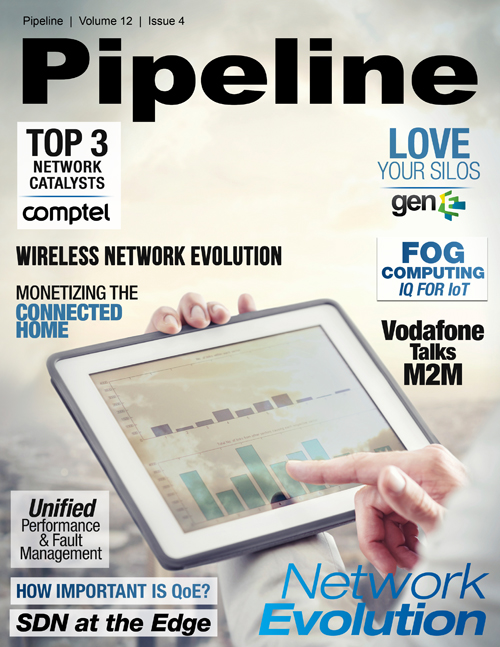Fog Computing: Intelligence for IoT
By: Tony Merenda
 The Internet of Things promises to be a transformative technology, potentially replacing or augmenting nearly every item in our daily lives (and likely introducing others not even dreamed of yet).
The Fitbits and Nest thermostats of today are merely the beginning – Gartner
foresees that as soon as 2020, the IoT may already include 26 billion connected units. The world to come is one in which every home, office, and place of business will be dense with IoT
devices, from smart appliances to smart products to RFID tags and sensors, not to mention that each individual may be covered in IoT wearables everywhere they go. By their functions, these
soon-to-be ubiquitous devices provide streams that are data rich and bandwidth hungry. Just as if in your home you suddenly began using hundreds of different smartphones to stream YouTube and then
saw your Wi-Fi signal buckle under the pressure, this new IoT technology will require a new, more robust, network to support it.
The Internet of Things promises to be a transformative technology, potentially replacing or augmenting nearly every item in our daily lives (and likely introducing others not even dreamed of yet).
The Fitbits and Nest thermostats of today are merely the beginning – Gartner
foresees that as soon as 2020, the IoT may already include 26 billion connected units. The world to come is one in which every home, office, and place of business will be dense with IoT
devices, from smart appliances to smart products to RFID tags and sensors, not to mention that each individual may be covered in IoT wearables everywhere they go. By their functions, these
soon-to-be ubiquitous devices provide streams that are data rich and bandwidth hungry. Just as if in your home you suddenly began using hundreds of different smartphones to stream YouTube and then
saw your Wi-Fi signal buckle under the pressure, this new IoT technology will require a new, more robust, network to support it.Internet of Things devices will require always-on connections
Additionally, IoT devices are not only data intensive but require constant connectivity. Whereas with current connected devices, going offline may not totally impair functionality or have a major impact on the user’s life (an offline tablet is inconvenient but still an app machine, a Fitbit still records data for later), many soon-to-come IoT devices like tags and sensors will lose their core functionally when not able to connect. Smart appliances and household controls will revert to their current non-smart input methods; and once users have become accustomed to the convenience of controlling the lights and doors and pre-heating the oven with their smartphones or voice commands, going back to the old ways will feel like having to stand up to change the channel on the television feels now. There’s the possibility of more serious implications as well – say, for devices that perform vitally important medical monitoring. In the retail sector, already most storefronts are so Internet-dependent that they cannot complete transactions without an online connection – with more adoption of IoT solutions, loss of connectivity could produce slow downs and other issues throughout supply chains and enterprise business pipelines as well. Gartner finds that, even today, network downtime can cost an organization up to $300,000 every hour, and this can only be expected to increase as more IoT solutions are incorporated into enterprise processes.Centralizing cloud data processing at a single site is currently a highly popular approach to satisfying data processing needs, largely because it offers lower costs and robust application security. The cloud itself has effectively slashed infrastructure costs for enterprises in recent years, trouncing traditional on-premises approaches with much cheaper and simpler-to-scale cloud delivery of on-demand computing, storage, and network services. It’s this infrastructure – cloud computing at remote Internet data centers where the flow of data is governed by network gateways – that is utilized in realizing much of the IoT as it is today. However, this infrastructure will not suffice under the demands of a fully-realized IoT-enabled world without some significant reinforcement.
Fog computing bridges IoT and cloud for more dependable networks
Fog computing is a method for bridging the distance between IoT devices and remote data centers; by analogy, bringing the cloud down to earth and nearer to where all that raw data is being collected, and to where processed data in the form of device feedback or information is being returned to. In order to produce a less strained and more resilient system, fog computing selects the portion of the vast data sets created by IoT devices which would benefit most from fast response times and handles their processing load using computing resources placed at the network edge.





















